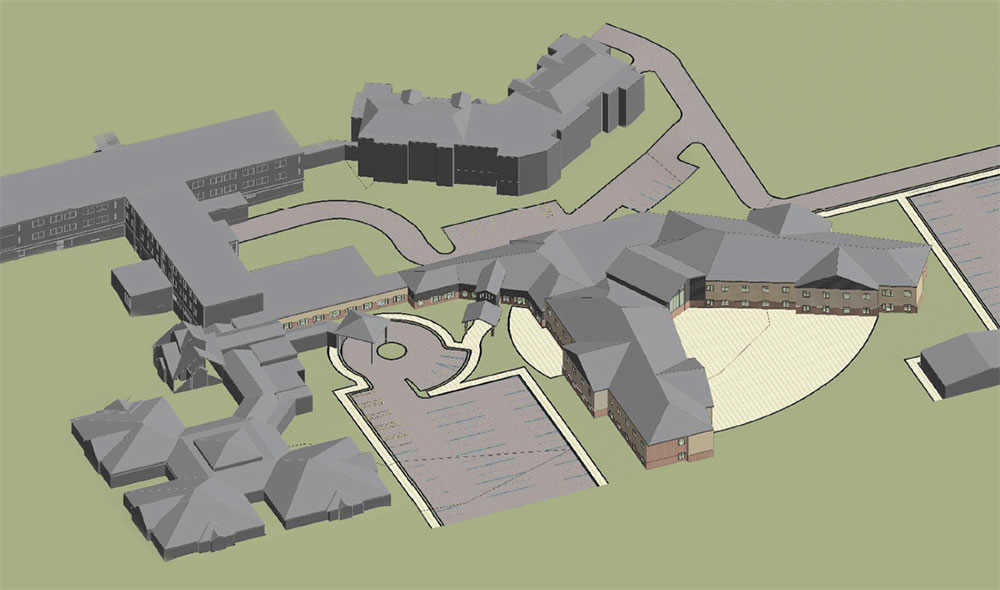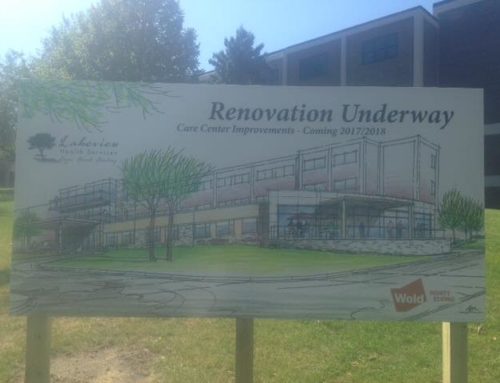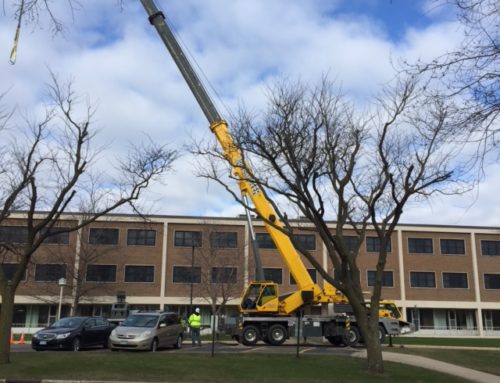A new building means we can offer greater, state-of-the-art amenities for more people. That’s needed now more than ever as recently we became the only local provider of skilled care and need to take care of more people now and in the future. The design of the new building is being built in the emerging leader of care center design known as a “Neighborhood Concept” This concept encourages companionship and sociability among residents. A more homelike, warm, person-centered environment and lifestyle is created. Residents have more availability to make their own choices and remain in control of their lives. Daily living activities, even as basic as dining options, can be more spontaneous, varied and available.
A greater level of comfort and dignity can be offered by creating private rooms in a homey, neighborhood style of living. This affords everyone the same opportunities and better meets the demands of prospective residents and their families in the future, ensuring Lakeview has a place in your community for many years to come.
Ways of Giving
Cash is by far the most common method for the majority of donors is a gift in the form of cash or check. The amount given is eligible for deduction on your tax return. The amount of actual after-tax cost of the donation depends on the donor’s tax situation.
Individual Retirement Account distributions may be given directly to charities. Congress has voted to make permanent the exclusion from income of up to $100,000 per person, per year for IRA distributions, which are given directly to charities. This distribution counts towards your Required Minimum Distribution (RMD). Please contact your tax advisor regarding the rules and steps necessary to make a gift through your Individual Retirement Account.
Appreciated Investments is another option for donors where the tax cost of converting the investment to cash is substantial. Generally, a donation of appreciated investments is computed based upon the fair market value of investment at the date of contribution regardless of the donor’s original cost basis. No capital gains tax is due on the appreciation of the underlying investments. Appreciated investments include a number of assets such as stocks, mutual funds, bonds, precious metals, real estate and many other types of investments. There are special rules associated with the contribution of appreciated investments and we recommend that you consult your tax advisor before making any transfer of appreciated investments.
Life Insurance can be an attractive way of providing a future benefit to the organization. If an existing, paid-up policy is gifted, the donor would be eligible for a tax deduction equal to the cash surrender value of the policy on the date of the gift. Upon death of the insured, the policy process would be payable to Lakeview. Another popular alternative is the purchase of a new life insurance policy in the name of Lakeview. As the donor pays the premium, he or she is eligible for a deduction equal to the premiums paid during the tax year. Upon death of the insured, the policy proceeds are payable to Lakeview.
Special Bequest donations give donors another option to leave assets to a charity by designation (specific bequest) in their Will. Many donors make this specific bequest in the form of either a specific dollar amount or a percentage of their estate. The donor’s estate is reduced by the amount of the specific bequest, which could result in a significant reduction in federal estate taxes. To make this bequest, the donor will need to consult their attorney and direct them to revise their Will to include Lakeview as a recipient of the special bequest.
Charitable Remainder Trust are when donors own appreciated assets they would like to contribute to a charity except that they desire and need to retain the income from those assets during their life. A CRT not only allows the donor to retain an income stream from the property, it also permits the CRT to sell the underlying property, avoid the capital gains tax on appreciated property and take a tax deduction for the current value of the future gift to the charity. CRTs are irrevocable trusts that actually provide for and maintain two sets of beneficiaries. The first set is the income beneficiaries (you and, if married, a spouse). Income beneficiaries receive a set percentage of income for you lifetime from the trust. The second set of beneficiaries is the charity you names. They receive the principle of the trust after the income beneficiaries pass away. CRTs are a great opportunity for charitable giving. Please consult your tax advisor regarding the stops to establishing a CRT.
Our Mission is to demonstrate God’s love for his people through life enhancing supportive services for older adults and their families.
Mae DeWar-Aust
Foundation Director




